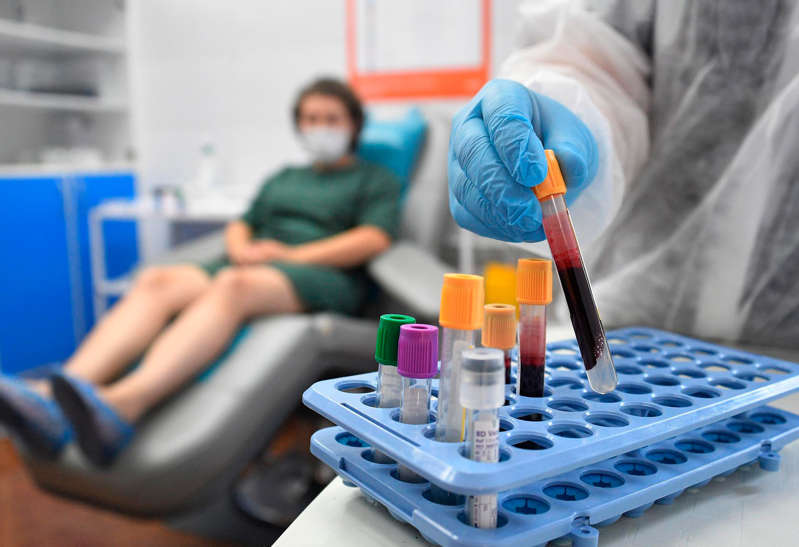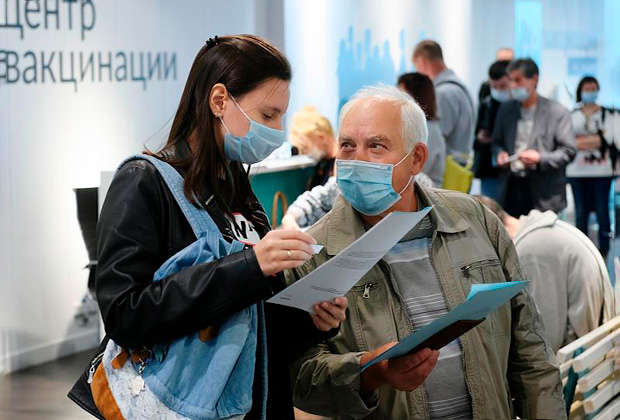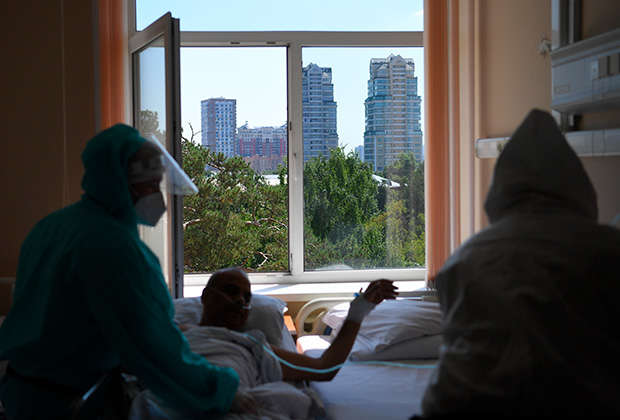
Until recently, delta was considered the most infectious and deadly strain of the coronavirus. Russian scientists were confident that the emergence and spread of a new strain, which would be heavier than the “delta”, is unlikely. However, now there is a new strain of coronavirus – “mu”. According to researchers from the United States, it is able to evade antibodies formed both as a result of vaccination and after the body defeats a real disease. Lenta.ru spoke with immunologist Nikolai Kryuchkov about how dangerous the Colombian strain of coronavirus is for Russia, why it has adapted to vaccines and how to stop the SARS-CoV-2 mutation.
***
“Lenta.ru”: How did the “mu” strain of coronavirus appear and where is it circulating now?

Nikolai Kryuchkov: In fact, the first cases of infection with the mu strain were recorded in January this year in Colombia. Since then, this line has spread, but the rate of spread was much lower than, for example, for the same “delta” line. In 40 countries of the world, if I remember correctly, such cases of infection have been recorded. Special regions of distribution are some countries in South America, for example, Colombia and Ecuador, as well as France, Spain and the USA. In the UK, this line circulates, but in much smaller quantities.
In late August, the Colombian strain of the coronavirus was listed by the World Health Organization (WHO) as a VOI, rather than a VOC.
How is it different from others?
In general, “mu” has characteristic mutations that other lines also had, such as “beta”, “delta”, “alpha”. Some of these mutations are associated with the ability of the coronavirus variant to better escape the specific immunity formed in response to vaccination or disease by existing lines.
A study was recently published that showed that compared to the predecessors of the “delta” strain, the ability of the serum produced after vaccination with Pfizer BioNTech to neutralize the “mu” strain of coronavirus was reduced. Whereas in the case of “alpha”, “beta” and “gamma” this ability was higher. Now, due to the Colombian strain, she fell – not much, but nevertheless noticeably.
This is a natural process. When we talk about the “beta”, “gamma” – and “alpha” lines, as well as the “delta” and “delta plus” lines, one of their characteristics is a decrease in the effectiveness of the antiviral protection of specific immunity formed in response to vaccination existing types of vaccines or previous COVID-19 disease.

Photo: Evgeny Pavlenko / Kommersant
That is, it turns out that the new strain arose due to vaccination?
This is a common occurrence when there is a mass vaccination. The most critical story is when we get to the threshold of herd immunity. Not necessarily directly close to it, but when the proportion of vaccinated already becomes noticeable – 30-40 percent of the population. In this case, there is a targeted selection of infection strains in order to acquire additional protection and resistance to vaccination.
Why is this happening? This is how selection takes place. Since vaccination becomes a significant population factor, the infection notices it and begins to adapt – strains that are more resistant to the immunity that have arisen in response to vaccination survive. Therefore, in those places where there is a very high population density and a relatively high percentage of vaccinated – and I am not saying that this is necessarily the level of herd immunity, we are talking about the level of 20-60 percent – the virus begins to adapt, more resistant variants are being selected.
It is important to “crush” the virus, play with it and bypass it at certain turns – then everything will be fine. If this opportunity is missed, the rate of vaccination is reduced, etc., then the virus begins to adapt to vaccines.
When will this new strain come to Russia?
I think he has already come to our country. We need to understand how we find it. We sequenced a certain number of samples of the virus (set – approx. “Lenta.ru” ), we select some of the daily cases for this. The problem is that delta and delta plus quickly took over Russia. These are very powerful lines – they gobbled up virtually all other lines in the Eastern Hemisphere, only the “delta plus” remained – it is strong in itself, and in order to defeat it, you need to have even better characteristics. It is not a fact that “mu” has these characteristics, because after all it spread in South America and in percentage terms is noticeably inferior to “delta”, “delta plus” and “gamma”.
In Russia it is for sure. I think this is a small percentage so far. But we do not know for sure, because the intensity of genome-wide sequencing, that is, the number of samples that is sequenced daily, is very small in Russia. It cannot be compared with the British one – by orders of magnitude. And therefore, there is a very high chance of not noticing them until they gain strength.

Photo: Ilya Pitalev / RIA Novosti
But whether “mu” will gain strength is a question, because in this case he came to the clearing, which is already occupied by a very strong player. To start biting off this population, you need to be even stronger.
The work that I have seen on the laboratory assessment of the weakening of specific immunity shows that weakening does occur. But, first, it is comparable to delta, delta plus and lambda. Secondly, of course, in comparison with the previous lines, it is noticeable, but it is not so dramatic. That is, it does not render the vaccine useless, but simply reduces its effectiveness.
And what to do with it? How to continue to fight the virus if it constantly mutates and adapts to vaccines?
The decrease in the effectiveness of vaccines will occur, but I expect that it will not be an avalanche, but a gradual and phased one. This makes it possible for the period while it is happening, to adjust the scheme of vaccine use. But this is not just about the famous booster dose – that is, revaccination. In this case, I mean a booster dose, for example, in the form of two injections at once, and after three to four weeks – a third. That is, instead of two injections, three.
Next – we can increase the interval between injections. Instead of 21 days, take a break of 28 or 35 days. This works too. The best thing is to gradually change the antigenic composition of the vaccines. After that, start mass vaccination with a new drug. That is, do not vaccinate separately the old and separately the new, but replace the old drug with a new one. This will make it possible to return the effectiveness of vaccines to the original 90-95 percent.
No new strain that has emerged cancels out or nullifies the protection that the vaccine gives, but it does reduce it. Not drastically, but noticeably reduces. Vaccines that are not adapted to the new strains continue to work anyway.

